[English] 日本語
 Yorodumi
Yorodumi- PDB-1oga: A structural basis for immunodominant human T-cell receptor recog... -
+ Open data
Open data
- Basic information
Basic information
| Entry | Database: PDB / ID: 1oga | ||||||
|---|---|---|---|---|---|---|---|
| Title | A structural basis for immunodominant human T-cell receptor recognition. | ||||||
 Components Components |
| ||||||
 Keywords Keywords |  IMMUNE SYSTEM/RECEPTOR / IMMUNE SYSTEM/RECEPTOR /  IMMUNE SYSTEM-RECEPTOR-COMPLEX / TCR / MHC / IMMUNE SYSTEM-RECEPTOR-COMPLEX / TCR / MHC /  IMMUNODOMINANCE / FLU / IMMUNODOMINANCE / FLU /  COMPLEX / COMPLEX /  TRANSMEMBRANE / TRANSMEMBRANE /  GLYCOPROTEIN / POLYMORPHISM / GLYCOPROTEIN / POLYMORPHISM /  T-CELL / T-CELL /  RECEPTOR / RECEPTOR /  IMMUNE SYSTEM-RECEPTOR complex IMMUNE SYSTEM-RECEPTOR complex | ||||||
| Function / homology |  Function and homology information Function and homology information : / : /  : / alpha-beta T cell receptor complex / retina homeostasis / : / alpha-beta T cell receptor complex / retina homeostasis /  regulation of membrane depolarization / Translocation of ZAP-70 to Immunological synapse / Phosphorylation of CD3 and TCR zeta chains / T cell mediated cytotoxicity directed against tumor cell target / antigen processing and presentation of endogenous peptide antigen via MHC class I via ER pathway, TAP-dependent / alpha-beta T cell activation ... regulation of membrane depolarization / Translocation of ZAP-70 to Immunological synapse / Phosphorylation of CD3 and TCR zeta chains / T cell mediated cytotoxicity directed against tumor cell target / antigen processing and presentation of endogenous peptide antigen via MHC class I via ER pathway, TAP-dependent / alpha-beta T cell activation ... : / : /  : / alpha-beta T cell receptor complex / retina homeostasis / : / alpha-beta T cell receptor complex / retina homeostasis /  regulation of membrane depolarization / Translocation of ZAP-70 to Immunological synapse / Phosphorylation of CD3 and TCR zeta chains / T cell mediated cytotoxicity directed against tumor cell target / antigen processing and presentation of endogenous peptide antigen via MHC class I via ER pathway, TAP-dependent / alpha-beta T cell activation / positive regulation of memory T cell activation / Generation of second messenger molecules / TAP complex binding / antigen processing and presentation of exogenous peptide antigen via MHC class I / Golgi medial cisterna / positive regulation of CD8-positive, alpha-beta T cell activation / CD8-positive, alpha-beta T cell activation / PD-1 signaling / positive regulation of CD8-positive, alpha-beta T cell proliferation / CD8 receptor binding / endoplasmic reticulum exit site / regulation of membrane depolarization / Translocation of ZAP-70 to Immunological synapse / Phosphorylation of CD3 and TCR zeta chains / T cell mediated cytotoxicity directed against tumor cell target / antigen processing and presentation of endogenous peptide antigen via MHC class I via ER pathway, TAP-dependent / alpha-beta T cell activation / positive regulation of memory T cell activation / Generation of second messenger molecules / TAP complex binding / antigen processing and presentation of exogenous peptide antigen via MHC class I / Golgi medial cisterna / positive regulation of CD8-positive, alpha-beta T cell activation / CD8-positive, alpha-beta T cell activation / PD-1 signaling / positive regulation of CD8-positive, alpha-beta T cell proliferation / CD8 receptor binding / endoplasmic reticulum exit site /  beta-2-microglobulin binding / TAP binding / beta-2-microglobulin binding / TAP binding /  protection from natural killer cell mediated cytotoxicity / antigen processing and presentation of endogenous peptide antigen via MHC class I via ER pathway, TAP-independent / antigen processing and presentation of endogenous peptide antigen via MHC class Ib / detection of bacterium / protection from natural killer cell mediated cytotoxicity / antigen processing and presentation of endogenous peptide antigen via MHC class I via ER pathway, TAP-independent / antigen processing and presentation of endogenous peptide antigen via MHC class Ib / detection of bacterium /  T cell receptor binding / positive regulation of ferrous iron binding / positive regulation of transferrin receptor binding / early endosome lumen / positive regulation of receptor binding / Nef mediated downregulation of MHC class I complex cell surface expression / DAP12 interactions / negative regulation of receptor binding / lumenal side of endoplasmic reticulum membrane / Endosomal/Vacuolar pathway / response to bacterium / Antigen Presentation: Folding, assembly and peptide loading of class I MHC / antigen processing and presentation of exogenous protein antigen via MHC class Ib, TAP-dependent / cellular response to iron(III) ion / negative regulation of forebrain neuron differentiation / ER to Golgi transport vesicle membrane / response to molecule of bacterial origin / T cell receptor binding / positive regulation of ferrous iron binding / positive regulation of transferrin receptor binding / early endosome lumen / positive regulation of receptor binding / Nef mediated downregulation of MHC class I complex cell surface expression / DAP12 interactions / negative regulation of receptor binding / lumenal side of endoplasmic reticulum membrane / Endosomal/Vacuolar pathway / response to bacterium / Antigen Presentation: Folding, assembly and peptide loading of class I MHC / antigen processing and presentation of exogenous protein antigen via MHC class Ib, TAP-dependent / cellular response to iron(III) ion / negative regulation of forebrain neuron differentiation / ER to Golgi transport vesicle membrane / response to molecule of bacterial origin /  regulation of erythrocyte differentiation / regulation of iron ion transport / MHC class I peptide loading complex / HFE-transferrin receptor complex / T cell mediated cytotoxicity / cellular response to iron ion / antigen processing and presentation of endogenous peptide antigen via MHC class I / positive regulation of T cell cytokine production / MHC class I protein complex / multicellular organismal-level iron ion homeostasis / positive regulation of T cell mediated cytotoxicity / peptide antigen assembly with MHC class II protein complex / negative regulation of neurogenesis / positive regulation of receptor-mediated endocytosis / MHC class II protein complex / cellular response to nicotine / recycling endosome membrane / specific granule lumen / phagocytic vesicle membrane / peptide antigen binding / positive regulation of cellular senescence / antigen processing and presentation of exogenous peptide antigen via MHC class II / Immunoregulatory interactions between a Lymphoid and a non-Lymphoid cell / Interferon gamma signaling / positive regulation of immune response / negative regulation of epithelial cell proliferation / Modulation by Mtb of host immune system / positive regulation of T cell activation / Interferon alpha/beta signaling / positive regulation of type II interferon production / antimicrobial humoral immune response mediated by antimicrobial peptide / sensory perception of smell / negative regulation of neuron projection development / Downstream TCR signaling / E3 ubiquitin ligases ubiquitinate target proteins / tertiary granule lumen / DAP12 signaling / MHC class II protein complex binding / late endosome membrane / T cell differentiation in thymus / positive regulation of protein binding / ER-Phagosome pathway / antibacterial humoral response / iron ion transport / T cell receptor signaling pathway / protein refolding / early endosome membrane / protein homotetramerization / cellular response to lipopolysaccharide / intracellular iron ion homeostasis / defense response to Gram-negative bacterium / amyloid fibril formation / regulation of erythrocyte differentiation / regulation of iron ion transport / MHC class I peptide loading complex / HFE-transferrin receptor complex / T cell mediated cytotoxicity / cellular response to iron ion / antigen processing and presentation of endogenous peptide antigen via MHC class I / positive regulation of T cell cytokine production / MHC class I protein complex / multicellular organismal-level iron ion homeostasis / positive regulation of T cell mediated cytotoxicity / peptide antigen assembly with MHC class II protein complex / negative regulation of neurogenesis / positive regulation of receptor-mediated endocytosis / MHC class II protein complex / cellular response to nicotine / recycling endosome membrane / specific granule lumen / phagocytic vesicle membrane / peptide antigen binding / positive regulation of cellular senescence / antigen processing and presentation of exogenous peptide antigen via MHC class II / Immunoregulatory interactions between a Lymphoid and a non-Lymphoid cell / Interferon gamma signaling / positive regulation of immune response / negative regulation of epithelial cell proliferation / Modulation by Mtb of host immune system / positive regulation of T cell activation / Interferon alpha/beta signaling / positive regulation of type II interferon production / antimicrobial humoral immune response mediated by antimicrobial peptide / sensory perception of smell / negative regulation of neuron projection development / Downstream TCR signaling / E3 ubiquitin ligases ubiquitinate target proteins / tertiary granule lumen / DAP12 signaling / MHC class II protein complex binding / late endosome membrane / T cell differentiation in thymus / positive regulation of protein binding / ER-Phagosome pathway / antibacterial humoral response / iron ion transport / T cell receptor signaling pathway / protein refolding / early endosome membrane / protein homotetramerization / cellular response to lipopolysaccharide / intracellular iron ion homeostasis / defense response to Gram-negative bacterium / amyloid fibril formation /  adaptive immune response / learning or memory / defense response to Gram-positive bacterium / adaptive immune response / learning or memory / defense response to Gram-positive bacterium /  immune response immune responseSimilarity search - Function | ||||||
| Biological species |   HOMO SAPIENS (human) HOMO SAPIENS (human) | ||||||
| Method |  X-RAY DIFFRACTION / X-RAY DIFFRACTION /  SYNCHROTRON / SYNCHROTRON /  MOLECULAR REPLACEMENT / Resolution: 1.4 Å MOLECULAR REPLACEMENT / Resolution: 1.4 Å | ||||||
 Authors Authors | Stewart-Jones, G.B.E. / McMichael, A.J. / Bell, J.I. / Stuart, D.I. / Jones, E.Y. | ||||||
 Citation Citation |  Journal: Nat.Immunol. / Year: 2003 Journal: Nat.Immunol. / Year: 2003Title: A Structural Basis for Immunodominant Human T Cell Receptor Recognition Authors: Stewart-Jones, G.B.E. / Mcmichael, A.J. / Bell, J.I. / Stuart, D.I. / Jones, E.Y. | ||||||
| History |
| ||||||
| Remark 700 | SHEET THE SHEET STRUCTURE OF THIS MOLECULE IS BIFURCATED. IN ORDER TO REPRESENT THIS FEATURE IN ... SHEET THE SHEET STRUCTURE OF THIS MOLECULE IS BIFURCATED. IN ORDER TO REPRESENT THIS FEATURE IN THE SHEET RECORDS BELOW, TWO SHEETS ARE DEFINED. |
- Structure visualization
Structure visualization
| Structure viewer | Molecule:  Molmil Molmil Jmol/JSmol Jmol/JSmol |
|---|
- Downloads & links
Downloads & links
- Download
Download
| PDBx/mmCIF format |  1oga.cif.gz 1oga.cif.gz | 191.7 KB | Display |  PDBx/mmCIF format PDBx/mmCIF format |
|---|---|---|---|---|
| PDB format |  pdb1oga.ent.gz pdb1oga.ent.gz | 150.1 KB | Display |  PDB format PDB format |
| PDBx/mmJSON format |  1oga.json.gz 1oga.json.gz | Tree view |  PDBx/mmJSON format PDBx/mmJSON format | |
| Others |  Other downloads Other downloads |
-Validation report
| Arichive directory |  https://data.pdbj.org/pub/pdb/validation_reports/og/1oga https://data.pdbj.org/pub/pdb/validation_reports/og/1oga ftp://data.pdbj.org/pub/pdb/validation_reports/og/1oga ftp://data.pdbj.org/pub/pdb/validation_reports/og/1oga | HTTPS FTP |
|---|
-Related structure data
| Related structure data | 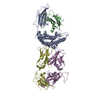 1qsfS S: Starting model for refinement |
|---|---|
| Similar structure data |
- Links
Links
- Assembly
Assembly
| Deposited unit | 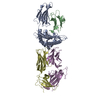
| ||||||||
|---|---|---|---|---|---|---|---|---|---|
| 1 |
| ||||||||
| Unit cell |
|
- Components
Components
-Protein , 2 types, 2 molecules AB
| #1: Protein | Mass: 31951.316 Da / Num. of mol.: 1 / Fragment: EXTRACELLULAR ALPHA-1, -2, -3, RESIDUES 25-300 Source method: isolated from a genetically manipulated source Source: (gene. exp.)   HOMO SAPIENS (human) HOMO SAPIENS (human)Description: REFOLDED FROM INCLUSION BODIES. REFOLDED FROM INCLUSION BODIES Production host:   ESCHERICHIA COLI (E. coli) / Strain (production host): BLR / References: UniProt: P01892, UniProt: P04439*PLUS ESCHERICHIA COLI (E. coli) / Strain (production host): BLR / References: UniProt: P01892, UniProt: P04439*PLUS |
|---|---|
| #2: Protein |  Beta-2 microglobulin / HDCMA22P / B2M Beta-2 microglobulin / HDCMA22P / B2MMass: 11879.356 Da / Num. of mol.: 1 / Fragment: BETA-2-MICROGLOBULIN, RESIDUES 21-119 Source method: isolated from a genetically manipulated source Source: (gene. exp.)   HOMO SAPIENS (human) HOMO SAPIENS (human)Description: REFOLDED FROM INCLUSION BODIES. REFOLDED FROM INCLUSION BODIES Production host:   ESCHERICHIA COLI (E. coli) / Strain (production host): BLR / References: UniProt: P01884, UniProt: P61769*PLUS ESCHERICHIA COLI (E. coli) / Strain (production host): BLR / References: UniProt: P01884, UniProt: P61769*PLUS |
-T-CELL RECEPTOR ... , 2 types, 2 molecules DE
| #4: Protein | Mass: 23599.172 Da / Num. of mol.: 1 Source method: isolated from a genetically manipulated source Details: CONTAINS ALSO C (CONSTANT) REGION / Source: (gene. exp.)   HOMO SAPIENS (human) HOMO SAPIENS (human)Description: REFOLDED FROM INCLUSION BODIES. REFOLDED FROM INCLUSION BODIES Production host:   ESCHERICHIA COLI (E. coli) / Strain (production host): BLR / References: UniProt: P01848*PLUS ESCHERICHIA COLI (E. coli) / Strain (production host): BLR / References: UniProt: P01848*PLUS |
|---|---|
| #5: Protein | Mass: 28559.518 Da / Num. of mol.: 1 / Fragment: EXTRACELLULAR, RESIDUES 1-130 Source method: isolated from a genetically manipulated source Source: (gene. exp.)   HOMO SAPIENS (human) HOMO SAPIENS (human)Description: REFOLDED FROM INCLUSION BODIES. REFOLDED FROM INCLUSION BODIES Production host:   ESCHERICHIA COLI (E. coli) / Strain (production host): BLR / References: UniProt: P01850 ESCHERICHIA COLI (E. coli) / Strain (production host): BLR / References: UniProt: P01850 |
-Protein/peptide / Non-polymers , 2 types, 569 molecules C

| #3: Protein/peptide | Mass: 966.174 Da / Num. of mol.: 1 / Source method: obtained synthetically Details: REFOLDED FROM INCLUSION BODIES. PEPTIDE CHAIN C.REFOLDED FROM INCLUSION BODIES Source: (synth.)   HOMO SAPIENS (human) HOMO SAPIENS (human) |
|---|---|
| #6: Water | ChemComp-HOH /  Water Water |
-Experimental details
-Experiment
| Experiment | Method:  X-RAY DIFFRACTION / Number of used crystals: 2 X-RAY DIFFRACTION / Number of used crystals: 2 |
|---|
- Sample preparation
Sample preparation
| Crystal | Density Matthews: 2.2 Å3/Da / Density % sol: 41.5 % | ||||||||||||||||||||||||
|---|---|---|---|---|---|---|---|---|---|---|---|---|---|---|---|---|---|---|---|---|---|---|---|---|---|
Crystal grow | pH: 6.5 / Details: 14% PEG8000, 50MM MES PH 6.5 | ||||||||||||||||||||||||
| Crystal grow | *PLUS pH: 6.5 / Method: vapor diffusion, sitting drop | ||||||||||||||||||||||||
| Components of the solutions | *PLUS
|
-Data collection
| Diffraction | Mean temperature: 100 K |
|---|---|
| Diffraction source | Source:  SYNCHROTRON / Site: SYNCHROTRON / Site:  ESRF ESRF  / Beamline: ID14-2 / Wavelength: 0.933 / Beamline: ID14-2 / Wavelength: 0.933 |
| Detector | Type: ADSC CCD / Detector: CCD / Date: Aug 15, 2002 |
| Radiation | Protocol: SINGLE WAVELENGTH / Monochromatic (M) / Laue (L): M / Scattering type: x-ray |
| Radiation wavelength | Wavelength : 0.933 Å / Relative weight: 1 : 0.933 Å / Relative weight: 1 |
| Reflection | Resolution: 1.4→30 Å / Num. obs: 200813 / % possible obs: 99.4 % / Observed criterion σ(I): 0 / Redundancy: 17.4 % / Biso Wilson estimate: 23.3 Å2 / Rmerge(I) obs: 0.063 / Net I/σ(I): 38.5 |
| Reflection shell | Resolution: 1.4→1.45 Å / Rmerge(I) obs: 0.83 / Mean I/σ(I) obs: 1.9 / % possible all: 98.3 |
| Reflection | *PLUS Highest resolution: 1.4 Å / Lowest resolution: 30 Å / Num. measured all: 3465000 / Rmerge(I) obs: 0.063 |
| Reflection shell | *PLUS % possible obs: 98.3 % / Rmerge(I) obs: 0.83 / Mean I/σ(I) obs: 1.9 |
- Processing
Processing
| Software |
| ||||||||||||||||||||||||||||||||||||||||||||||||||||||||||||||||||||||||||||||||
|---|---|---|---|---|---|---|---|---|---|---|---|---|---|---|---|---|---|---|---|---|---|---|---|---|---|---|---|---|---|---|---|---|---|---|---|---|---|---|---|---|---|---|---|---|---|---|---|---|---|---|---|---|---|---|---|---|---|---|---|---|---|---|---|---|---|---|---|---|---|---|---|---|---|---|---|---|---|---|---|---|---|
| Refinement | Method to determine structure : :  MOLECULAR REPLACEMENT MOLECULAR REPLACEMENTStarting model: PDB ENTRY 1QSF Resolution: 1.4→29.98 Å / Rfactor Rfree error: 0.002 / Data cutoff high absF: 199296.38 / Data cutoff low absF: 0 / Isotropic thermal model: RESTRAINED / Cross valid method: THROUGHOUT / σ(F): 0 Details: RESOLUTION-DEPENDENT WEIGHTING, BULK SOLVENT MODEL USED
| ||||||||||||||||||||||||||||||||||||||||||||||||||||||||||||||||||||||||||||||||
| Solvent computation | Solvent model: FLAT MODEL / Bsol: 51.2662 Å2 / ksol: 0.371397 e/Å3 | ||||||||||||||||||||||||||||||||||||||||||||||||||||||||||||||||||||||||||||||||
| Displacement parameters | Biso mean: 31.5 Å2
| ||||||||||||||||||||||||||||||||||||||||||||||||||||||||||||||||||||||||||||||||
| Refine analyze |
| ||||||||||||||||||||||||||||||||||||||||||||||||||||||||||||||||||||||||||||||||
| Refinement step | Cycle: LAST / Resolution: 1.4→29.98 Å
| ||||||||||||||||||||||||||||||||||||||||||||||||||||||||||||||||||||||||||||||||
| Refine LS restraints |
| ||||||||||||||||||||||||||||||||||||||||||||||||||||||||||||||||||||||||||||||||
| LS refinement shell | Resolution: 1.4→1.45 Å / Rfactor Rfree error: 0.013 / Total num. of bins used: 10
| ||||||||||||||||||||||||||||||||||||||||||||||||||||||||||||||||||||||||||||||||
| Xplor file |
| ||||||||||||||||||||||||||||||||||||||||||||||||||||||||||||||||||||||||||||||||
| Refinement | *PLUS Highest resolution: 1.4 Å / Lowest resolution: 30 Å / Num. reflection obs: 178426 / Rfactor Rfree : 0.232 : 0.232 | ||||||||||||||||||||||||||||||||||||||||||||||||||||||||||||||||||||||||||||||||
| Solvent computation | *PLUS | ||||||||||||||||||||||||||||||||||||||||||||||||||||||||||||||||||||||||||||||||
| Displacement parameters | *PLUS | ||||||||||||||||||||||||||||||||||||||||||||||||||||||||||||||||||||||||||||||||
| Refine LS restraints | *PLUS
| ||||||||||||||||||||||||||||||||||||||||||||||||||||||||||||||||||||||||||||||||
| LS refinement shell | *PLUS Rfactor Rfree: 0.369 / Rfactor Rwork: 0.364 / Num. reflection Rwork: 9329 |
 Movie
Movie Controller
Controller


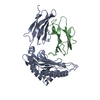
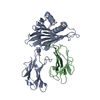
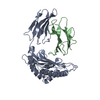
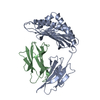
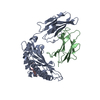

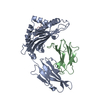
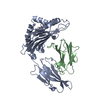
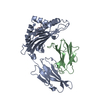
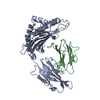
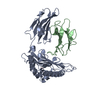
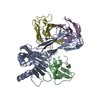
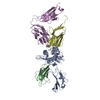
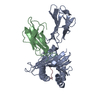
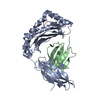
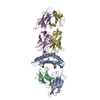
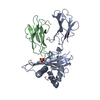
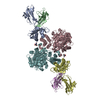
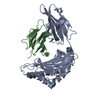
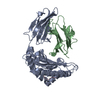
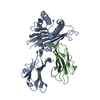
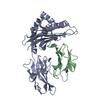
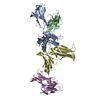

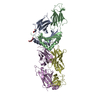
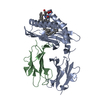
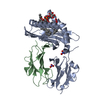
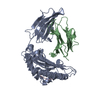
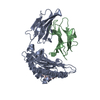
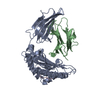
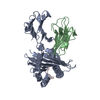
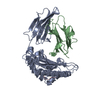
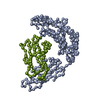
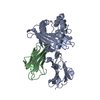
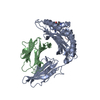
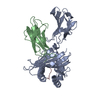
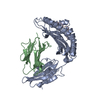
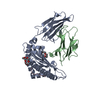
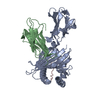
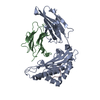
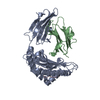
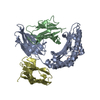
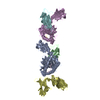
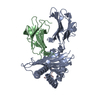

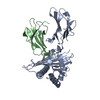
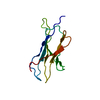
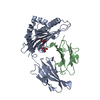

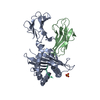
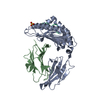
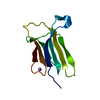
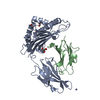
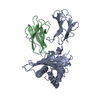
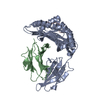
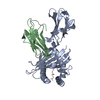
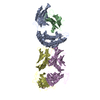
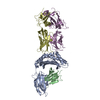
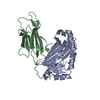
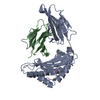
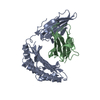
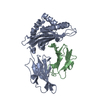
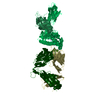
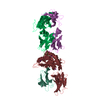
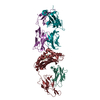
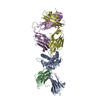
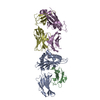
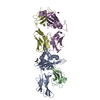
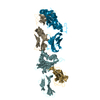
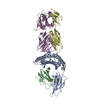
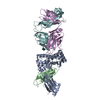
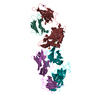
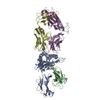
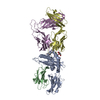
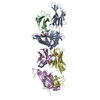
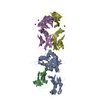
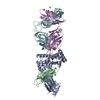
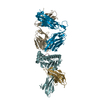
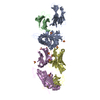
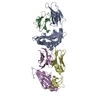
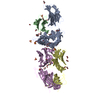
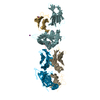
 PDBj
PDBj






